If you have a DCC layout, you may have heard the term “Railcom” already. Especially if you are in Europe, because to my knowledge no US-based manufacturer has adopted the technology. Railcom has been under some controverse here in Europe, with some people saying it is useless, or simply ignoring the DCC standard.
“Railcom Plus” is a new addition, that was launched about 2 years ago.
Before anyone can decide whether or not Railcom / RailcomPlus would be of use, here is a short summary of what those can do for us – users – in layman’s terms.
Railcom© & RailcomPlus© are trademarks of Lenz Elektronik GmbH & Electronic Solutions Ulm GmbH & Co. KG.
Reminder on DCC
DCC is the most popular norm for running a digital model train layout. There are other digital protocols (Motorola, MFX, Selectrix…) that I won’t discuss here. The bottom line is: with the right command station and decoders, you can achieve much more than on an analog layout.
DCC was defined by the 2 main model train organizations:
- MOROP (MOdellbahn EuROPe), the standardization body in Europe, publishing the well known “NEM” rules (Norms for European Model railroad)
- The NMRA (National Model Railroad Association) in the US
Those 2 organizations have also learned to work together, to facilitate the life of hobbyists on both sides of the pond.
This doesn’t prevent some manufacturers from developping technologies on top of the DCC standard (additional “bricks” if you wish), that are not officially part of the DCC standard.
Railcom & RailcomPlus, improving DCC?
Railcom
The German manufacturer Lenz decided that DCC was not enough. They developped (with or without other firms, stories differ), another layer on top of DCC: the Railcom technology.
Railcom is backward compatible with DCC, which means you can run any DCC decoder with a Railcom command station, and that Railcom Decoders will work normally with non Railcom stations.
What is railcom? In a nutshell, it enables bi-directionnal communication. In normal DCC, decoders can’t speak to or answer to the command station: the station sends orders (“program CV X”, “Move forward”…), and the decoder does it (or not…). With Railcom however, the decoder can speak back to the command station. In real life, that means 2 things:
- “POM” (Programming on the Main or “Ops Programming”) is easier
Traditional POM is now supported my many decoders and command station. It is however a so-called “bling programming” method: you order a CV value change, but the locomotive can’t talk balk. You get no confirmation, and of course you can’t read existing CV values.
With Railcom, you can read CV values without placing your trains on the programming track, and you can get a confirmation if you want to change a CV. - Train number detection
If you use detection modules that are Railcom compatible, they can send back (to your CS, or your computer) more than just whether a train is present or not: the train number, or the direction can also be sent.
Railcom, as said above, is not an official NEM norm. It starts being adopted however by several German manufacturers:
- Lenz (who created it)
- ESU
- Uhlenbrock
- Tams Elektronik
Railcom Plus
This has been around for about 2 years, and is yet another layer on top of DCC. Railcom Plus was “developped on top of the Lenz Railcom standard, by ESU, and is now marketed by the 2 firms” (original text in German on the Lenz website).
But what is it? What else are they trying to sell us?
RailcomPlus is an improvement over Railcom; that is an improvement over another improvement, it allows something that was – until now – only possible with Märklin and its “MFX” standard for HO trains. It allows a locomotive to be automatically recognized and registered by the central station:
- The Railcom Plus CS will display the locomotive, as well as its functions, and save them for future use (no need to add the locomotive manually in the CS)
- If the DCC address were to be already used by another decoder in your database, the CS will automatically offer you to change the new locomotive’s address, to a number that is not attributed yet.
Is it a gadget? That’s a matter of opinion. In reality, this doesn’t only allows you to “bring your trains to a friend” and play seamlessly. It also prevents loosing time to configure your new locomotives in your central station. In my case, I use ESU decoders (RailcomPlus compatible). I sometimes configure more than 20 sound functions in them, using the LokProgrammer from the same brand. My CS (an ESU ECOS II) recognizes the new trains automatically, without me having to do anything.
Let’s look at the picture
Below is a quick summary of what Railcom and Railcom Plus bring:
Do I want that?
There is a a strong debate about the utility of Railcom, and even more about the newborn Railcom Plus. Some criticize Lenz & ESU for betraying the MOROP. In some ways, Railcom and Railcom Plus are a lot like an Apple computer: it is a closed environment, encouraging you to buy products from the same brands.
My personal opinion is simple: if the closed environment brings me advantages I want, I don’t mind. Though I do understand those who disagree.
In any case, if you want to use Railcom or Railcom Plus, you’ll need to plan your purchases for compatible hardware. Here is what you will need:
A Railcom or Railcom Plus command station
Railcom implies slightly modifying the DCC signal on the tracks. It will remain perfectly compatible with non railcom decoders, but adds a short electronic “cutout”. So you will need a CS that is either Railcom (or better Railcom Plus) compatible.
I use a ECOS II from ESU, that got a firmware upgrade to be Railcom Plus capable. Lenz also has equivalent products.
Railcom boosters
If you have boosters on your layout, they will also need to be Railcom compatible.
However, if you are only interested in local detection (no POM programming), it is theoretically possible to use a Railcom compatible booster with a non Railcom CS. The track sections powered by this booster will have the Railcom cutout, so local detectors on those sections will be able to send the train number to your computer.
If you want Railcom Plus, then you will need a Railcom Booster that is also capable of talking back to your CS. To my knowledge, only the ESU EcosBoost booster can do that, in conjunction with an ESU ECOS II.
Railcom or Railcom Plus decoders
This is obvious 🙂 Some manufacturers have released free firmware updates so your old decoders become Railcom, or sometimes Railcom Plus compatible. A list of those decoders is beyong the scope of this post.
Conclusion
The debate is still open on Railcom. It is not officially part of the DCC norm, but it is fully backward compatible. Also of note, is that the previous train number recognition technologies also aren’t part of the DCC norms (namely LISSY from Uhlenbrock, or Digitrax’s transponder technology).
In fact, train number detection is useless if you are running your layout with a computer. Just tell your PC where the trains are at the beginning, and it will track them as they move along.
In my case, I find Railcom Plus very practical. Here is a short video of the automatic recognition process:
What about you? What do you think? Did Railcom make it to the US already? Don’t hesitate to comment.
External links
- Railcom page in German (Lenz has closed its presence in the US): https://www.lenz-elektronik.de/digitalplus-railcom.php
- Railcom Plus explanation on the ESU website: http://www.esu.eu/en/support/white-papers/railcomplusr/
Post edited on 2013/08/05: rephrased “POM” section.
Reminder: I am a hobbyist and these articles only represent my personal views. I am not receiving any compensation, in any form, from the brands or stores mentioned here. The product names, marketing names, and brands mentioned here are the property of their respective owners.



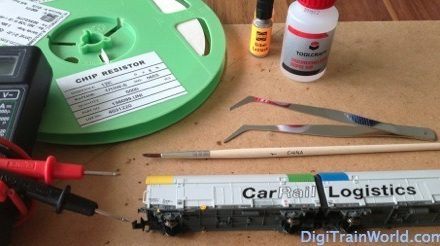
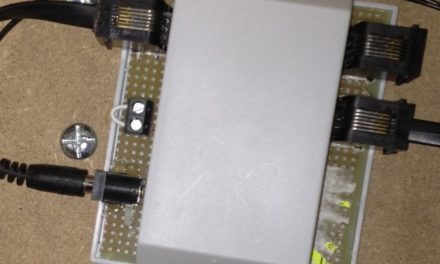
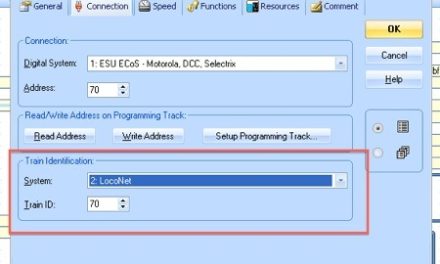
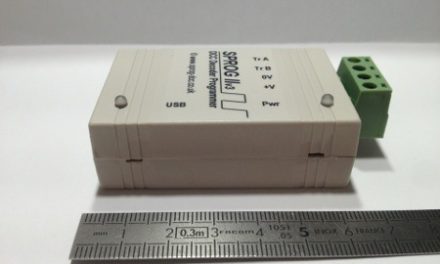
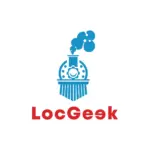

Hi,
Thanks for doing your blog, I am getting back in to trains and this is very helpful. I am trying to implement occupancy detection and Railcom on my layout with my ECoS II and I was doing some research on Railcom and Railcom Detectors to try and understand it better and I stumbled over this 16 zone Railcom detector/reader athttp://www.coastaldcc.co.uk/products/productinfo.php?id=1556 andhttp://www.dcc4pc.co.uk/our_products.html .
It looked pretty interesting and wanted to see if you had any experience with it.
Thanks,
Chris
Hi Chris, thanks for the comment.
The most important thing is to make sure what you’d like to achieve with train detection. If you just want to know if a track is occupied, then you can just use the integrated S88 in the ECOS II: it’s cheap and works pretty well; look at my other post “Loconet vs. S88”.I personally only use the “global” function of Railcom (being able to program decoders on the main) and the global function of Railcom Plus (automatic detection of locomotive and functions when put on the track). That means I don’t use Railcom on a block basis: my blocks are monitored by Loconet & S88, and these just tell me if a train is there, not which one. But again, I am using a computer software so it “follows” my trains and knows where trains are anyway.
If you want Railcom *local* detection (each block sending feedback “I am occupied AND it’s train nr X”), then it’s going to be expensive. The easiest way (and this is a guess) would be to use the latest version of the ESU Ecos Detector, which has Railcom on some of its outputs and works with your ECOS II seamlessly (at least it should).
But again, even ESU didn’t equip all ports of the Ecos Detector with Railcom, because there are limited applications to exactly tracking train number in each block. What is it you’d like to do?
I am in the US but, no one I know is using Railcom yet, I am the first that I know of trying it.
Chris